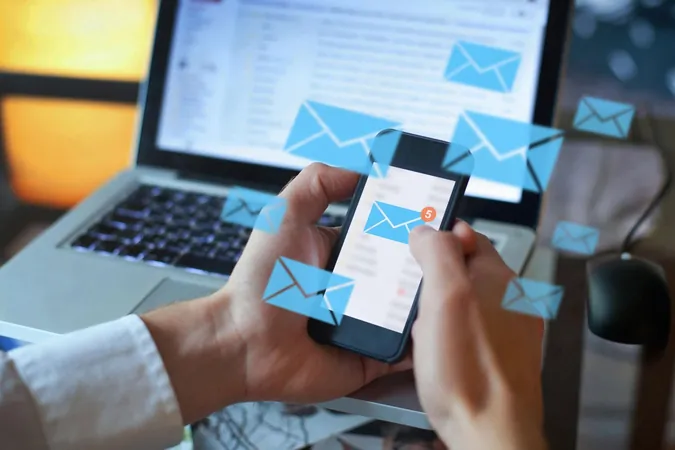
Urgent Alert: Hidden Email Malware Threatening Gmail and Outlook Users!
2025-01-19
Author: Wai
Urgent Alert: Hidden Email Malware Threatening Gmail and Outlook Users!
In an alarming update, security researchers have issued a critical warning for millions of users on Gmail and Outlook regarding sophisticated hacking tactics employed by two malicious software threats, VIP Keylogger and 0bj3ctivityStealer. Users are urged to stay vigilant as these threats cleverly conceal themselves within email messages, a tactic that heightens the risk of account breaches.
The Evolving Landscape of Email Threats
While phishing attacks are a common concern for internet users, the latest insights reveal an unsettling evolution in tactics. According to a new report from HP Wolf, malware is now being delivered through hiding malicious code within seemingly benign images. This technique not only complicates detection but also allows hackers to bypass traditional network security measures.
VIP Keylogger and 0bj3ctivityStealer both utilize this innovative approach. VIP Keylogger is designed to monitor keystrokes and stealthily extract sensitive data from applications and clipboard content. In contrast, 0bj3ctivityStealer targets critical information such as login credentials and credit card numbers.
As articulated by security experts, "By embedding harmful code in images and hosting them on legitimate sites, attackers can circumvent many web security protocols." This revelation underscores the need for users to remain cautious when interacting with unsolicited emails, even if they contain attachments that appear harmless.
The Mechanics of Attack
The reported campaigns have posed as legitimate invoices and purchase requests, tricking victims into unwittingly engaging with the malicious content. In one concerning instance, a single malicious image was accessed a staggering 29,000 times, highlighting the successful propagation of these threats. For 0bj3ctivityStealer users, the method typically involves clicking on archive files that, when opened, download the harmful image directly from a remote server.
Protecting Yourself: What You Need to Do
The urgency of these security concerns has prompted major email service providers to bolster their defenses. Google has revealed ongoing efforts to enhance its protective measures for Gmail users, focusing on cutting-edge AI models designed to identify and neutralize threats more effectively. In 2024, Gmail's team noted a significant increase in spam filtration effectiveness, claiming to block 20% more spam than previous iterations of their defenses.
On the Microsoft front, Outlook.com users benefit from built-in spam and malware filtering, with extra layers of security for Microsoft 365 Family and Personal subscribers, who enjoy advanced screening of attachments and links.
Final Thoughts: Stay Alert and Educated!
In today’s digital landscape, remaining informed and cautious is essential in safeguarding against these hidden malware threats. As hackers become more sophisticated in their tactics, users must prioritize cybersecurity best practices. Always scrutinize unexpected emails, keep your antivirus software updated, and consider using advanced security features offered by your email service.
Do not let the hackers win—stay informed, stay cautious, and protect your digital life!




 Brasil (PT)
Brasil (PT)
 Canada (EN)
Canada (EN)
 Chile (ES)
Chile (ES)
 Česko (CS)
Česko (CS)
 대한민국 (KO)
대한민국 (KO)
 España (ES)
España (ES)
 France (FR)
France (FR)
 Hong Kong (EN)
Hong Kong (EN)
 Italia (IT)
Italia (IT)
 日本 (JA)
日本 (JA)
 Magyarország (HU)
Magyarország (HU)
 Norge (NO)
Norge (NO)
 Polska (PL)
Polska (PL)
 Schweiz (DE)
Schweiz (DE)
 Singapore (EN)
Singapore (EN)
 Sverige (SV)
Sverige (SV)
 Suomi (FI)
Suomi (FI)
 Türkiye (TR)
Türkiye (TR)